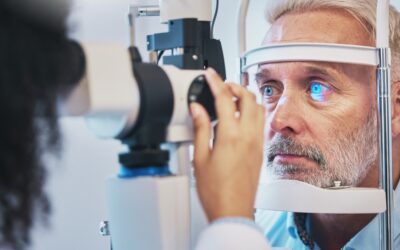Table of Contents
Teachers today present a lot of visual information, whether on a whiteboard or as part of a slideshow. Sure, you often support those visuals as you speak your lesson or have your students complete hands-on projects, but much of learning today relies on vision. This puts children who have vision problems at a major disadvantage at school. If the whiteboard is blurry to them, how much useful information do you think they would get out of your lesson? Would they be able to pass a test based solely on what they heard you say?
This is the struggle that faces students with undiagnosed or untreated vision issues. Luckily though, you, as a teacher, are in a unique position to identify problematic signs and point parents in the best direction for help.
Vision problems and school performance
Since up to 80% of learning is visual, it’s unsurprising that children who have vision challenges may be behind academically. Initially, children learn primarily through pictures, which then moves to letters and then words in big print. However, as children become more advanced readers, the print gets smaller and smaller, and vision can be more of an issue. Trying to read a whiteboard or chalkboard also becomes more difficult.
With the limited ability to see (and therefore, learn) a small percentage of what you’re teaching, it’s easy to understand how students with vision problems can receive bad grades and perform far below their actual skills.
Children might try to adapt by holding books closer to their faces or sitting closer to the front of the class. However, this can really only help so much. With millions of children having undiagnosed or untreated vision problems, this is a major issue to tackle.
Why are they not diagnosed?
There are many reasons why children might have undiagnosed vision issues. For example, the child may have always had a vision impairment. After all, if you see things in a blurry way, you might think that’s how everyone sees. Children may also be worried about having to get glasses. Some kids still view glasses as “nerdy,” and they might not want to seem that way to their classmates.
Yet another possible reason for undiagnosed vision problems is that parents think that a school vision screening is sufficient. If their child passed the test, they must not have any problems, right? Since school vision screenings are not comprehensive exams, they cannot capture all issues.
The least likely possibility is that the parents know there’s a vision problem, but they don’t think they can afford to get an eye exam or glasses. This is where you can help educate the family on their options.
Pre-paid Vision plans can be the answer
Parents may tell you that their child’s health or vision plan will cover eye exams and glasses. Unfortunately, however, many health and vision plans don’t include glasses or may pay very little of their cost.
But pre-paid vision plans, like those from Vision Care Direct, are an affordable alternative. Vision Care Direct offers a variety of plans, all of which include comprehensive eye exams. These exams go far beyond school screenings and look for vision problems as well as eye health. In addition, we offer savings on corrective lenses and eyeglass frames.
Because we are owned by doctors, not an insurance company, we give parents the flexibility to shop for glasses wherever they choose. Letting children pick the lenses and frames they like will encourage them to wear their glasses.
The importance of vision in academic performance cannot be stressed enough. While vision problems can be a concern, knowing that great options are available on exams and corrective lenses can give parents peace of mind.
Make sure to let your students’ parents know about Vision Care Direct, and help them take the first step to correcting their child’s vision issues. To learn more, contact us today.






















































